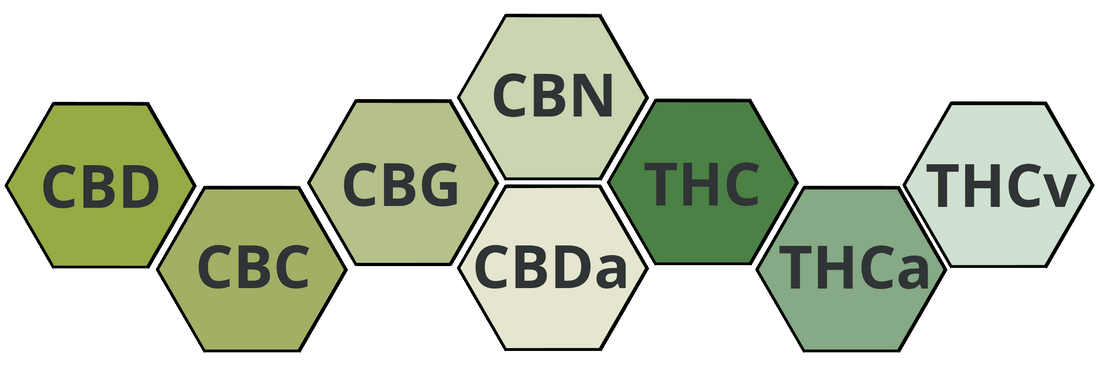What are cannabinoids? An often asked question. In this article, we will try to answer as simple as possible all your questions about the most important cannabinoids.
Cannabinoids – Definition with brief Explanation
Cannabinoids are found in the cannabis plant. Unfortunately, their research is still in its infancy. The worldwide demonization of the hemp plant has long stopped scientists from researching cannabis, cannabinoids, and any potential medicinal benefits.
In recent years, it became clear that cannabis contains over 480 active chemical compounds. 80 important compounds are found exclusively in the cannabis plant. This amount of unique active substance yields hundreds of new variables.
The 8 Most Important Cannabinoids
Cannabinoids interact with the cannabinoid receptors in our body. They work very differently in our nervous system and our brain. For the sake of simplicity, we have put together a list of the 8 most important cannabinoids of the cannabis plant.
THC – (-)-Δ9-trans-Tetrahydrocannabinol

THC is probably the best-known cannabinoid. This cannabinoid is responsible for the psychoactive effects of marijuana. THC releases dopamine and causes a feeling of euphoria and well-being.
THC is closely related to the cannabinoids CBG and CBD. CBG is the mother of THC and CBD. During the growth of the cannabis plant, CBG converts to THC and CBD.
CBD – Cannabidiol

CBD (cannabidiol) has become more and more popular in recent years. Today cannabidiol is the most important substance of the hemp plant. Extraordinary effects have been demonstrated in medical cannabinoid studies. CBD is non-psychoactive and accordingly, it does not make you “high”. It is even assumed that cannabidiol reduces or at least regulates the effects of THC.
CBG – Cannabigerol

Recent research has shown that CBG is the mother of THC and CBD. The stem cell CBG becomes during the growth phase of the cannabis plant a two-cell. Therefore, CBG is the template. During the flowering phase, CBG converts to THC and CBD.
CBN – Cannabinol

CBN occurs naturally in the cannabis plant as the plant ages. Over time – and when heated or exposed to oxygen – the cannabinoid THC converts to CBN. CBN can also be produced from THC that’s extracted from cannabis.
CBC – Cannabichromene

CBC is non-intoxicating, so it doesn’t produce a euphoric high like THC. The reason it is non-intoxicating is because it binds poorly to CB1 cannabinoid receptors in the brain. But CBC does bind with other receptors in the body, such as the vanilloid receptor 1 (TRPV1) and transient receptor potential ankyrin 1 (TRPA1), both of which are linked to pain perception. When CBC activates these receptors, increased levels of the body’s natural endocannabinoids like anandamide are released.

